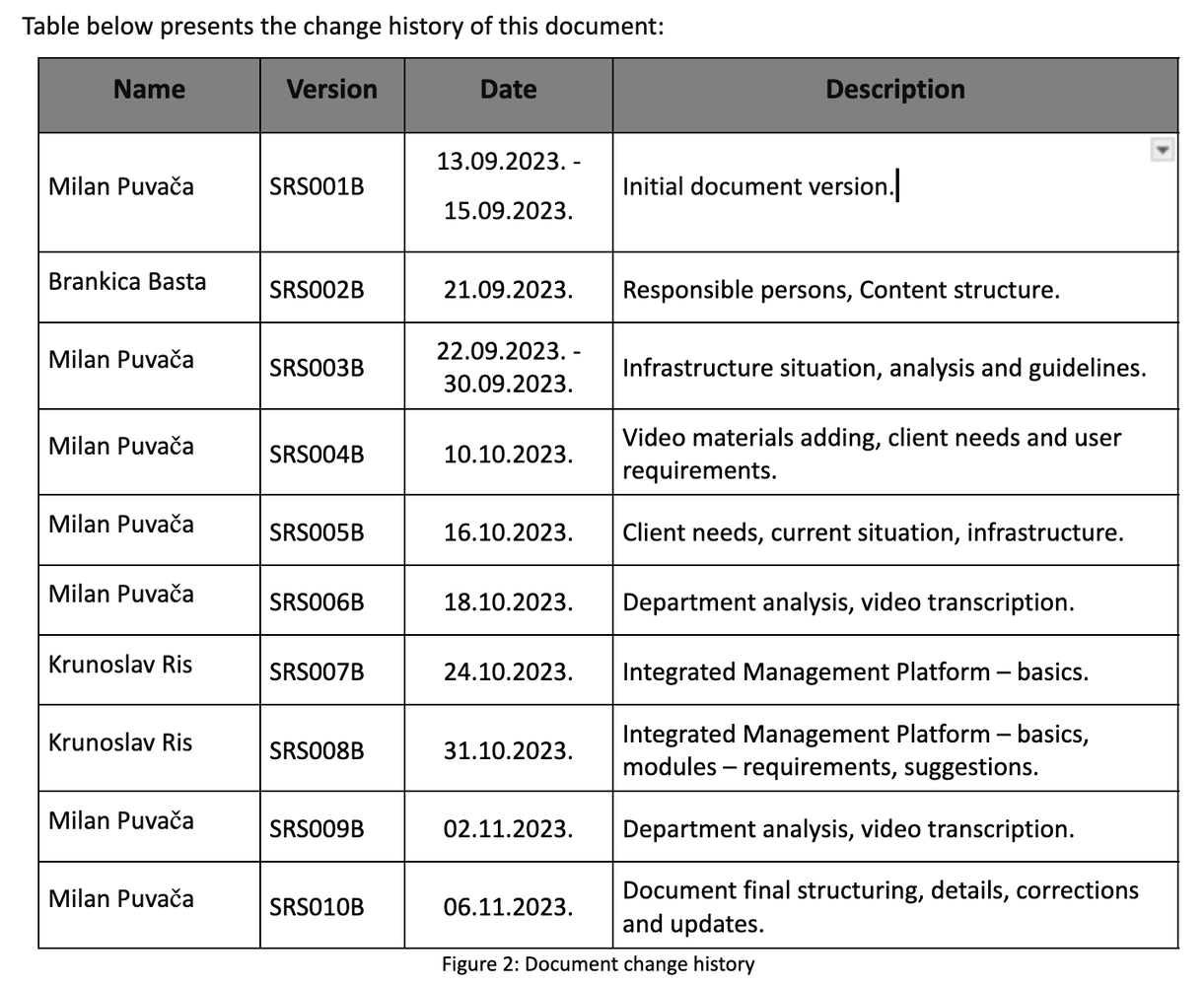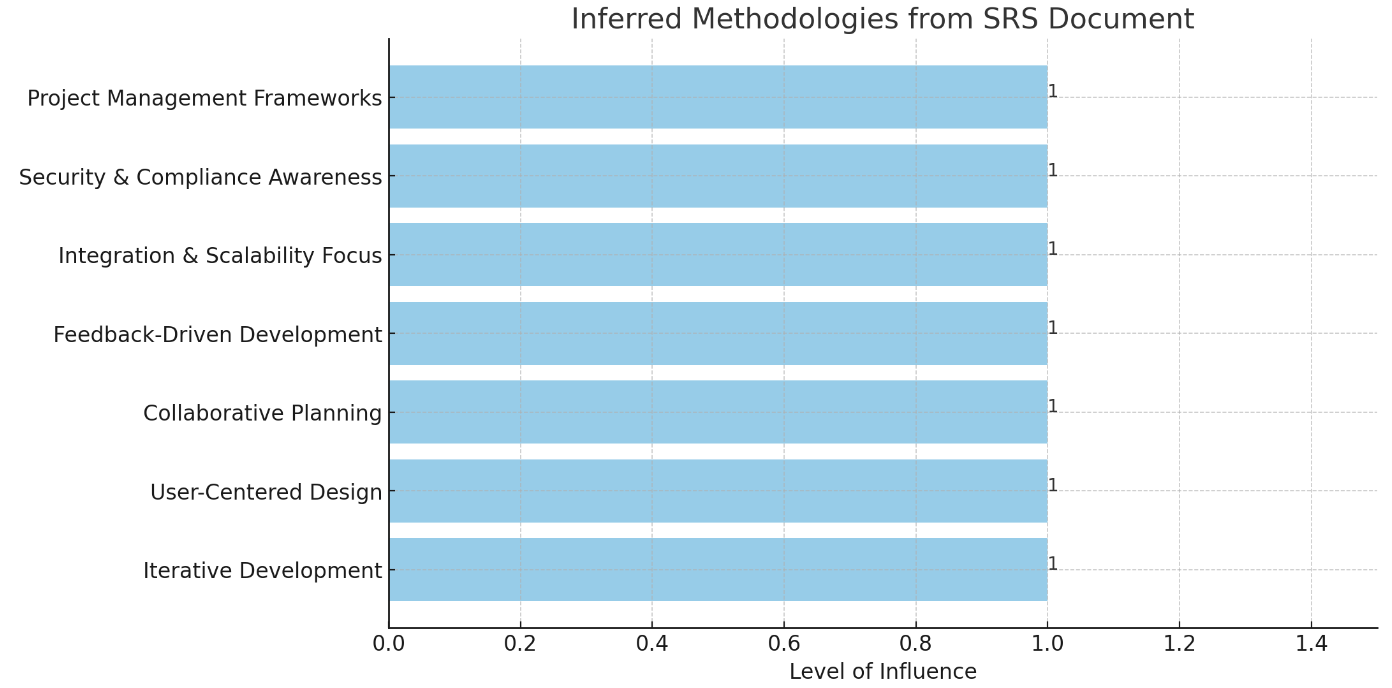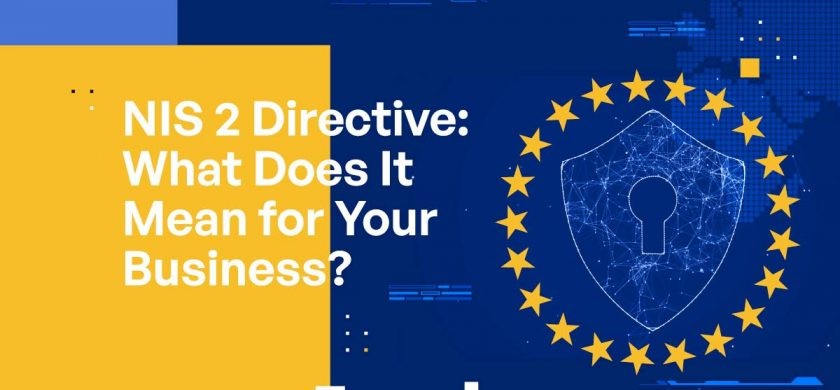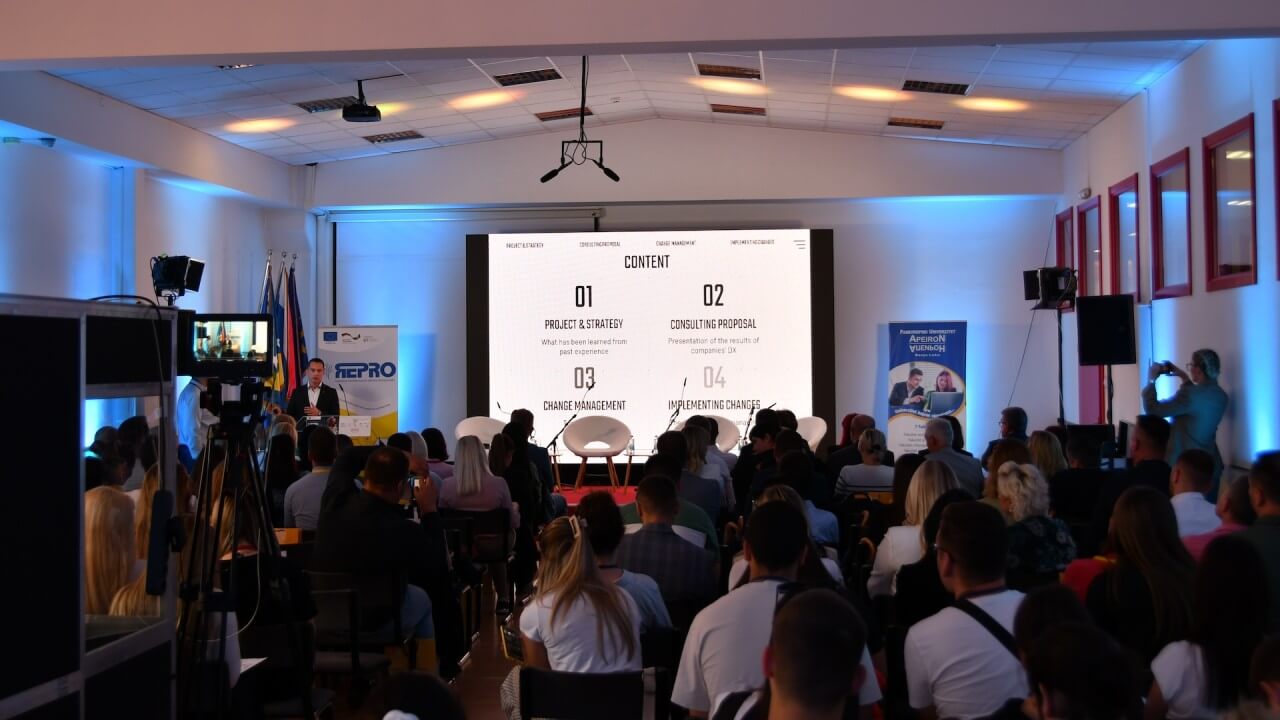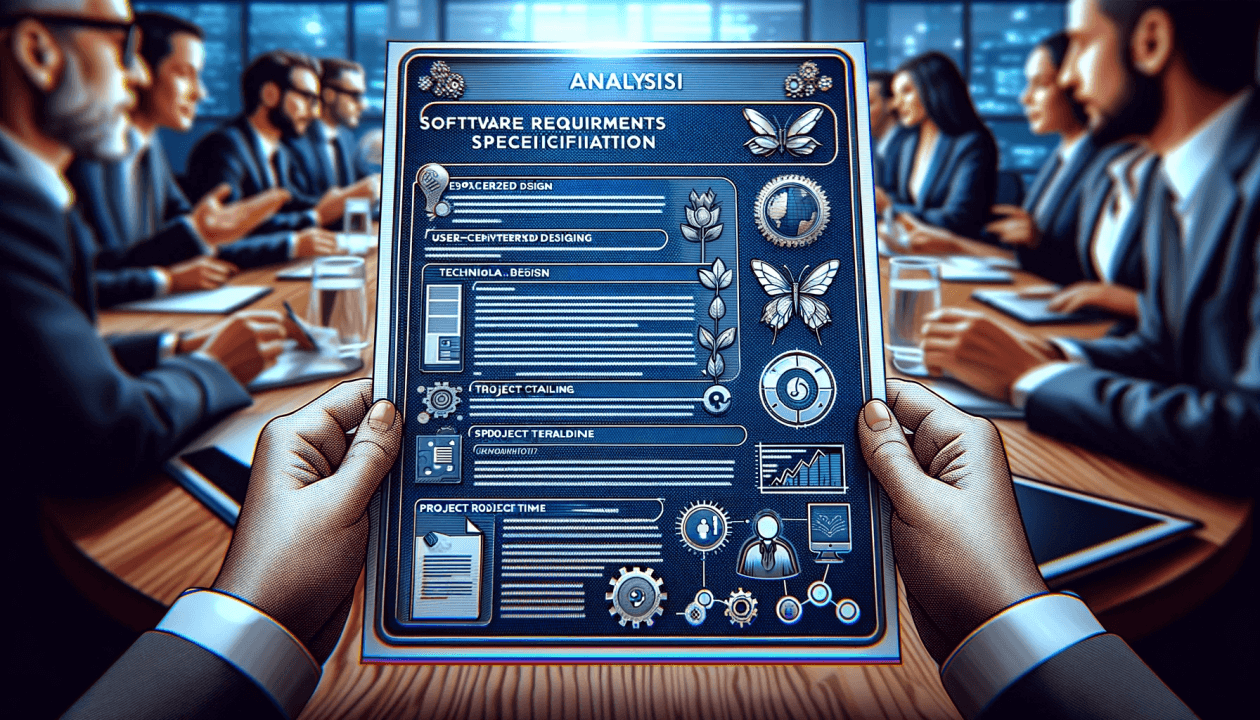
Strategic Approach to Digital Transformation – how we are doing it
Digital transformation represents a pivotal shift in how organizations leverage technology to innovate, enhance productivity, and engage with their stakeholders.
A recent work on the Ukrainian NGO we helped gave me the idea to create awareness of what Digital Transformation Consultants need to take care of when conducting a Digital Transformation Process. In the text below, we will provide an approach ( insights into structuring and a strategic approach) used in Lumen Spei. Also, we are using a mixture of methodologies for creating strategic documentation.
The process by Lumen Spei
Iterative Development Approach
With the client, we conducted several online meetings covering different NGO departments.
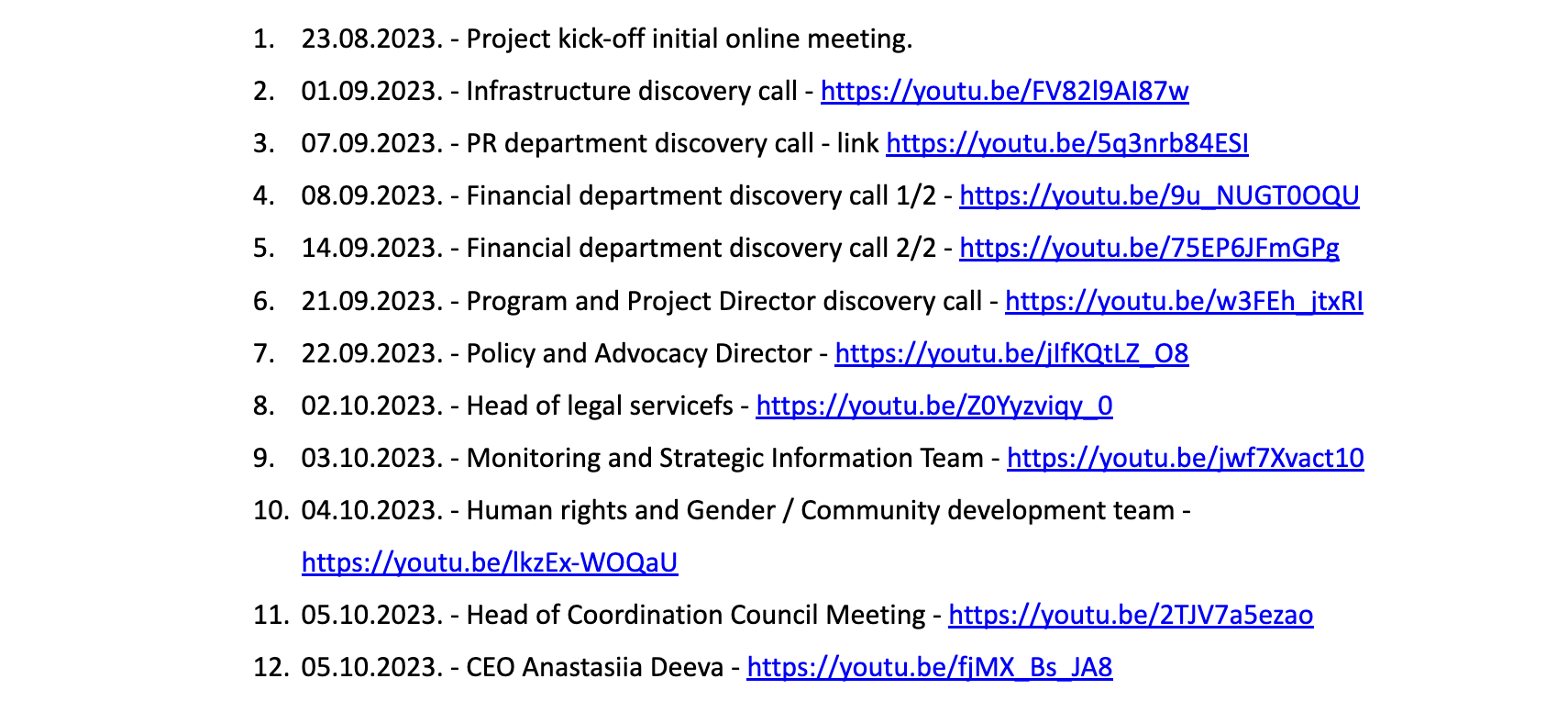
Interactive sessions
All meetings were around 60 minutes. At meetings, we typically ask about “pain points” and how they conduct day-to-day activities. Also, at the end of the meeting, we asked what “They” think can be done better, faster, with more automation. Usually, we record meetings because in most cases, we need to watch them again (for document preparation purposes).
By creating a document like the “Strategy for Digital Transformation,” we needed to use an iterative approach. This indicates methodologies like Agile or Incremental development, where the project evolves through collaboration between self-organizing cross-functional teams.
User-Centered Design:
The focus on analyzing business processes and workflows implies a user-centered design methodology. This approach is common in methodologies prioritizing user feedback and iterative testing / writing / development, such as Agile or Human-Centered Design.
Collaborative and Inclusive Planning
The preparation of the document using information from various departmental meetings is a part of the collaborative planning process. This is a hallmark of methodologies like Scrum or Kanban.
Feedback-Driven Development:
The document’s versioning is crucial. It is almost impossible to cover all processes from the first draft. Especially when you have multiple persons working on a document. Feedback-driven development process aligns with methodologies like Agile, where feedback is integral to each iteration.
Integration and Scalability Focus
Acknowledging the need for integration with existing systems and the aim for a scalable solution could suggest a methodology that values robust architecture and design, such as the Rational Unified Process (RUP) or DevOps practices.
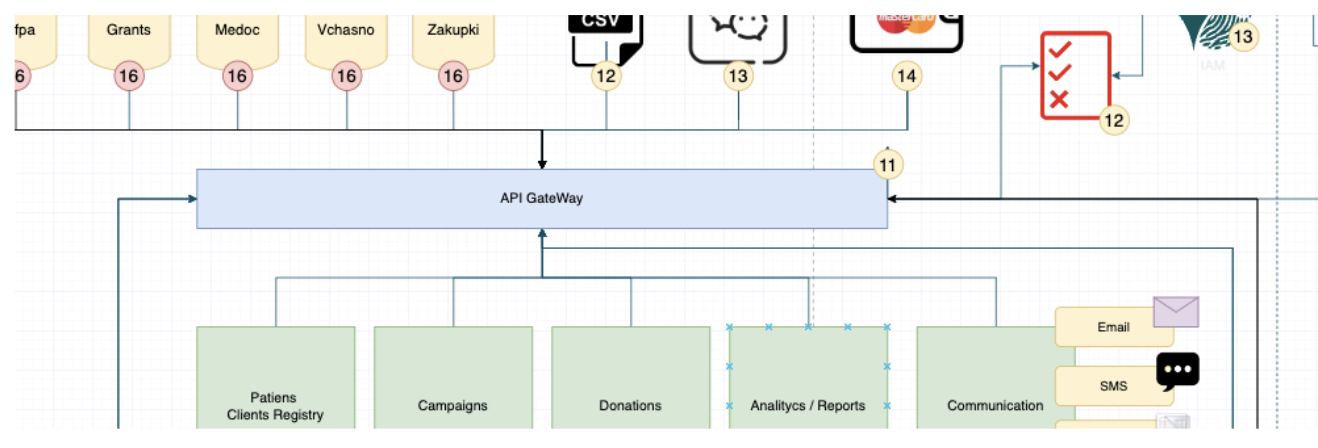
Central Point of contact – API Gateway
In this part of the document, we are usually offering the first draft of a high architectural overview.
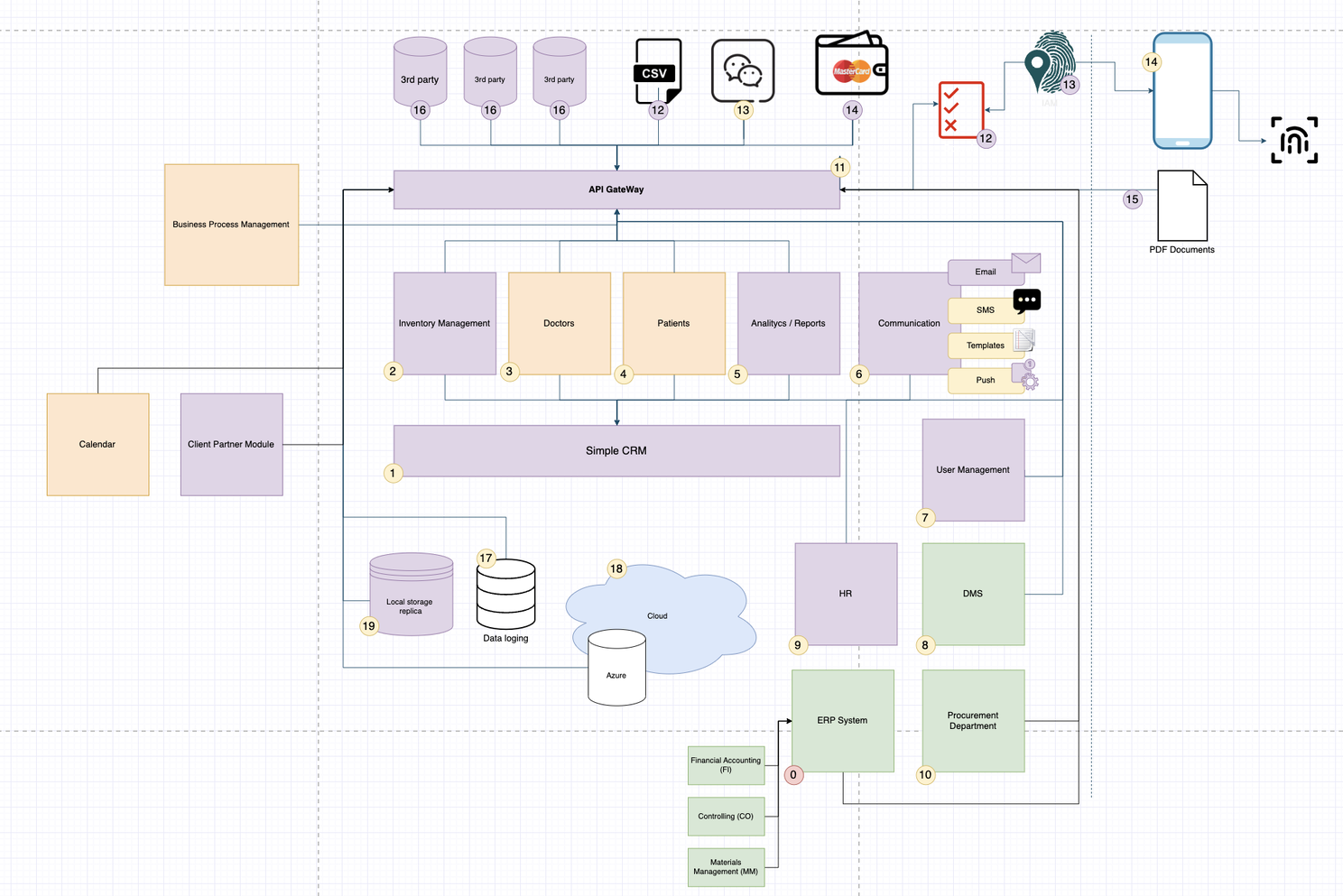
IT-Architectural Overview with Modules
In that overview, we are trying to “match” IT technologies with existing business processes. In most cases, there is no Unified software that is integrated under one umbrella. Clients are using several different software and then combining data exchange, which leads to slowing down business processes or non-compatible reports.
Security and Compliance Awareness
The attention to security is crucial, GDPR, data security, and Identity access management. Incorporation security and compliance considerations throughout the development lifecycle need to be aligned with DevSecOps principles.
Project Management Frameworks
The structured approach to outlining the software’s functionalities, project scope, and stakeholder roles is a structured project management framework influenced by traditional methodologies like Waterfall and PRINCE2 alongside flexible Agile practices.
Project execution – methodology
The methodology might be a hybrid or customized approach combining elements from different methodologies best to fit the project’s specific needs and context. Some of the best practices that I learned in the last 20 years are a mixture of different project management approaches, but regardless of methodology, if you want to produce a high-quality document, criteria that are represented in the graph below needs to be met:
Here is a graphical representation that illustrates the inferred methodologies:
- Iterative Development
- User-Centered Design
- Collaborative Planning
- Feedback-Driven Development
- Integration & Scalability Focus
- Security & Compliance Awareness
- Project Management Frameworks
Each bar represents a different methodology aspect inferred from the document. The length of the bars is uniform, indicating equal influence or presence of these aspects in the composition. This visualization helps us understand how various methodologies and approaches contribute to the overall development strategy outlined in the strategic document.
The scale with a value of “1” for each methodology doesn’t signify a ranking or level of quality. Instead, it indicates the presence or influence of each methodology in the Software Requirements Specification (SRS) document.
GAP Overview
the coverage of a GAP analysis is not a primary focus, but it needs to be tackled. NGOs need to be aware of what they are lacking, and how it can be mitigated.
- Document Focus: The document primarily centers around defining the requirements for a new platform, including detailing the current state of all software, project scope, and future development guidelines.
- GAP Analysis Elements: When you are conducting meetings, be sure that you examine current operational landscapes and identify areas needing technological enhancements. A GAP analysis includes a detailed comparison between current capabilities and desired future state, identifying specific gaps in processes, technology, and resources.
- Potential for Implicit GAP Analysis: The analysis of current infrastructure, software solutions, and departmental needs can be considered components of a GAP analysis.
Market-available Software Solutions
When you detect a process that can be mitigated with software, be sure that you investigate what will be the best option for the company. Include open-source and paid options, and create a deep analysis. Based on that you can give some recommendations.
Example: communication platform
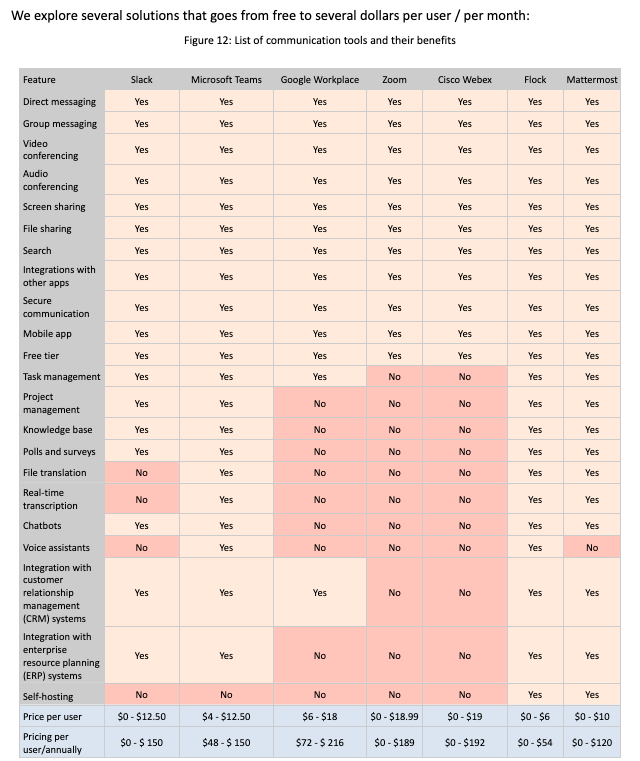
Communication platform with prices
You need to do that for all “modules” or future platform components. Take care about:
- Scalability
- Integration possibilities
- Company support for the future use
- Number of installation
- Recommendations / pain-points
- Technology stack
Before any conclusion, please take care about something which is called “Total Cost of Ownership.”
Total Cost of Ownership (TCO) is a financial estimate intended to help buyers and owners determine the direct and indirect costs of a product or system. TCO goes beyond the initial purchase price to consider the total cost of an asset over its useful life. Here’s a breakdown of what TCO typically includes:
- Initial Costs: This is the purchase price of the asset or system, which could be a one-time expense for purchasing hardware, software, or other equipment.
- Installation and Configuration Costs: These are the expenses associated with setting up and configuring the new system or asset, including any software or hardware installations.
- Training Costs: If the new system requires staff training, these costs cover the development and delivery of training programs.
- Operating Costs: These are ongoing expenses required to keep the system running. They can include energy consumption, routine maintenance, and software updates.
- Downtime Costs: This refers to the costs associated with system outages or failures, which can impact productivity and operations.
- Support and Maintenance Costs: Regular technical support, maintenance, software or hardware updates, and other service fees fall under this category.
- Upgrades/Expansion Costs: Over the life of the system or product, there may be a need for upgrades or expansions to meet growing or changing business needs.
- End-of-Life Disposal Costs: These are the costs associated with decommissioning and safely disposing of the system or asset at the end of its useful life.
The Conclusion
Finally, when we finish the Strategic Document, we create recommendations based on the findings.
Taken from the document:
By strategically choosing to develop custom software for core functionalities that deal with unique processes and data and integrating open-source solutions for more generic tasks, NGO can benefit from the agility and customization of tailor-made software without foregoing the cost efficiencies and community support that come with open-source platforms. This hybrid approach not only reflects a cost-conscious mindset but also exemplifies a commitment to operational efficiency and innovation.
Also, we are representing graphically our findings:
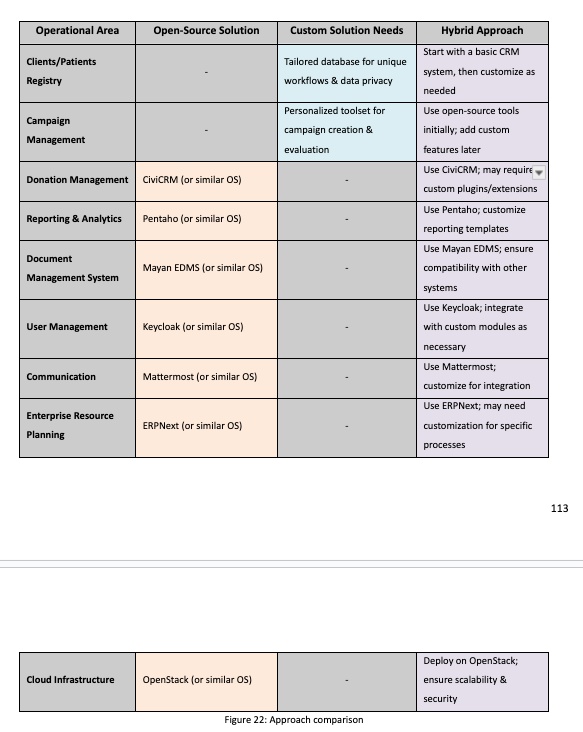
Findings
In short, we have 120 pages of the strategic document which my friend described like this:
All in all, you’ve come far with this kind of document. It is an excellent advantage for the work you do. Which personally pleases me.I am not familiar with the content of your books, but it would be interesting if (for personal marketing) you used a methodology or approach from your own books and cited it as a reference.Even if you don’t have it in that form, in this document, I see that you have a sense for gradation and listing, so use it somewhere in the future to define your methodologies, at least for some parts of digital transformation.
and
Looking at the entire document, this is actually not just a software requirements specification, but also a ‘screening/audit of the organization,’ partly a proposal for the advancement of business processes, partly a gap fit analysis for possible solutions. I don’t know what the project task was, but if it was only software requirement specification, then they got more than what they asked from you with this document. Which might be good PR for future engagements…
If you / your organization needs help with digital transformation strategy, please don’t hesitate to ping us. 🙂 Lumen Spei is ready for new challenges.

